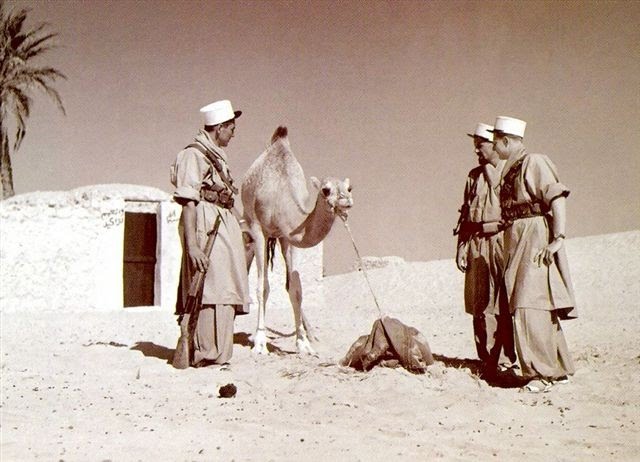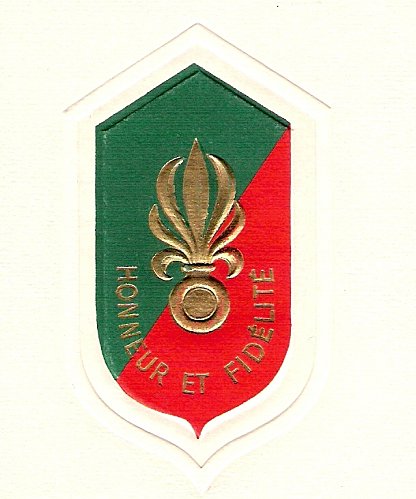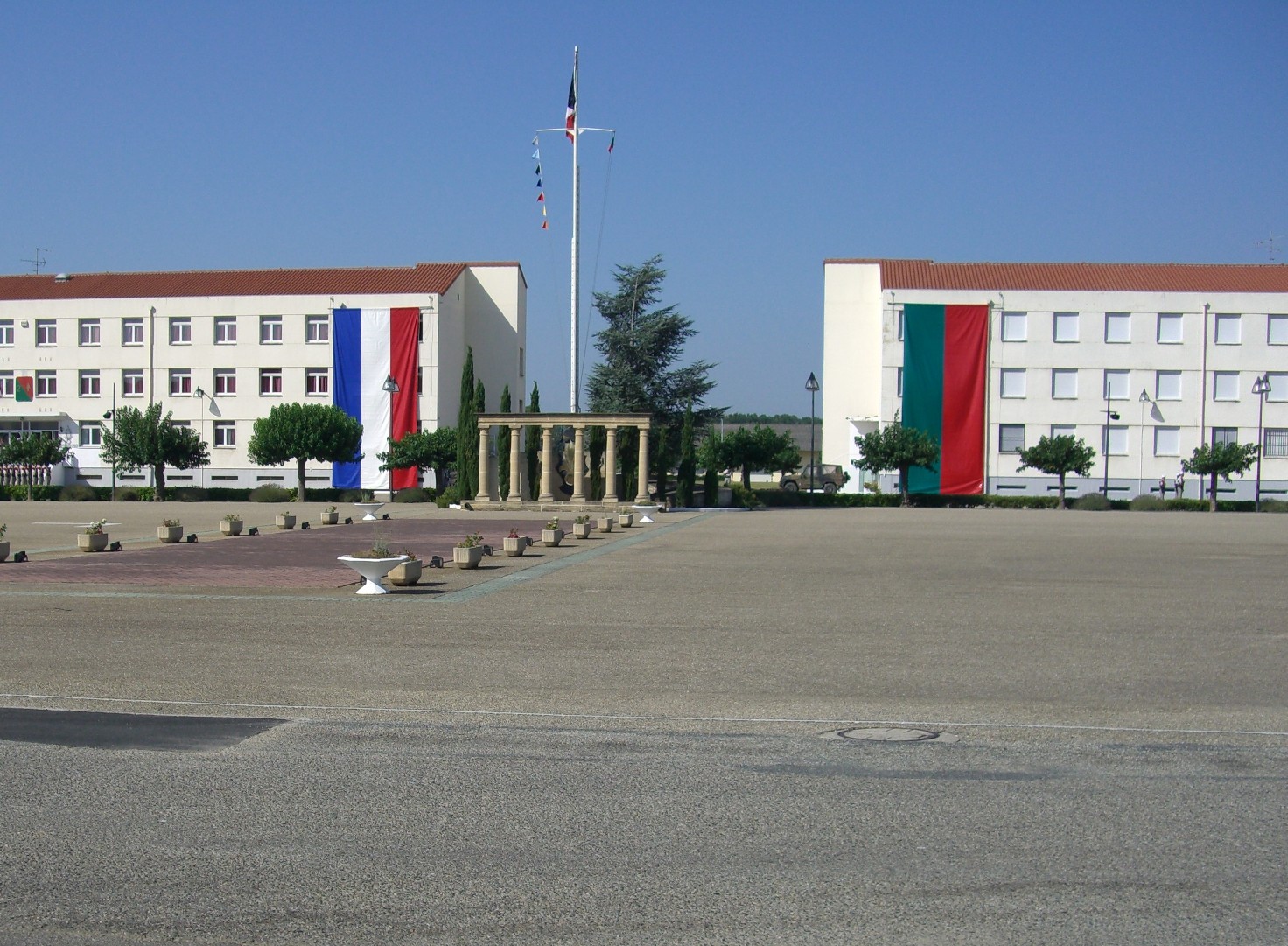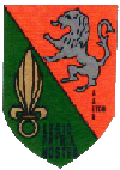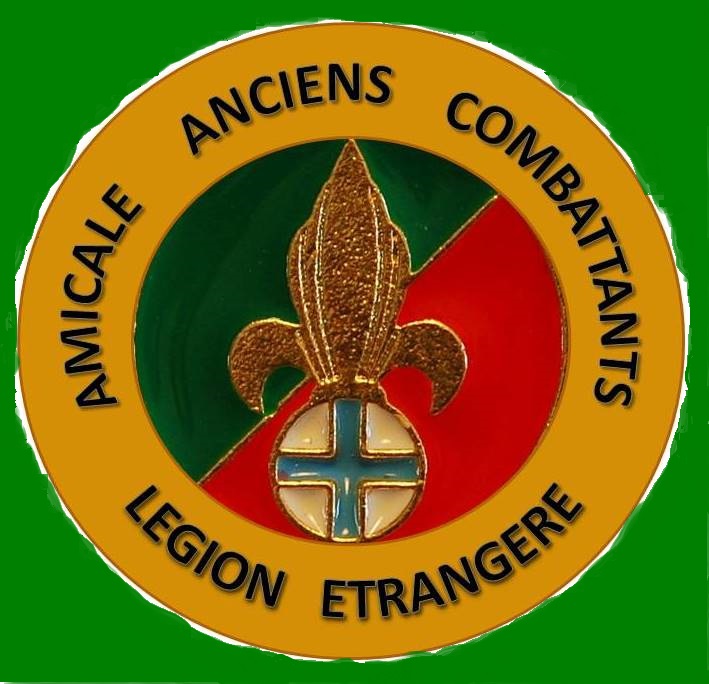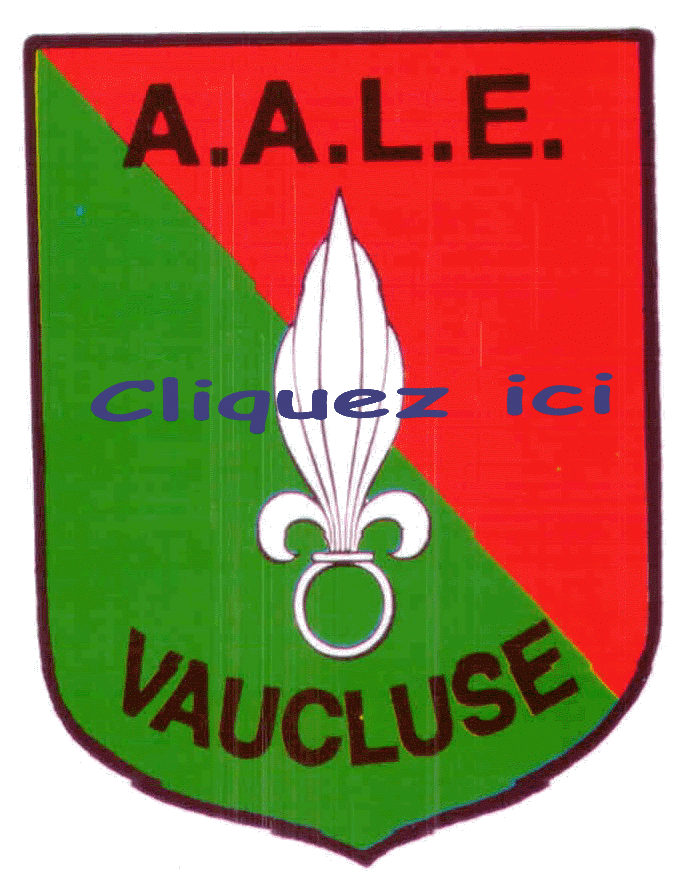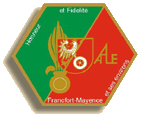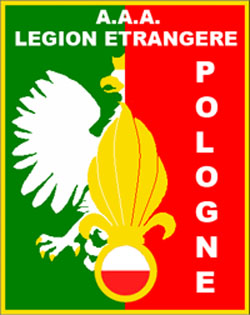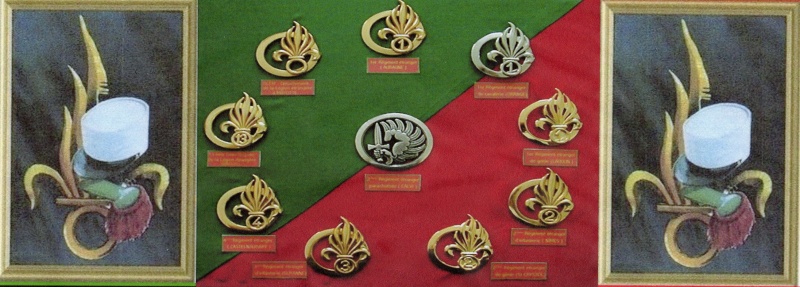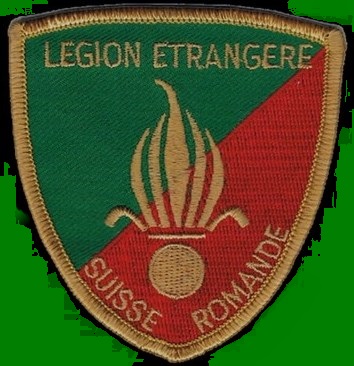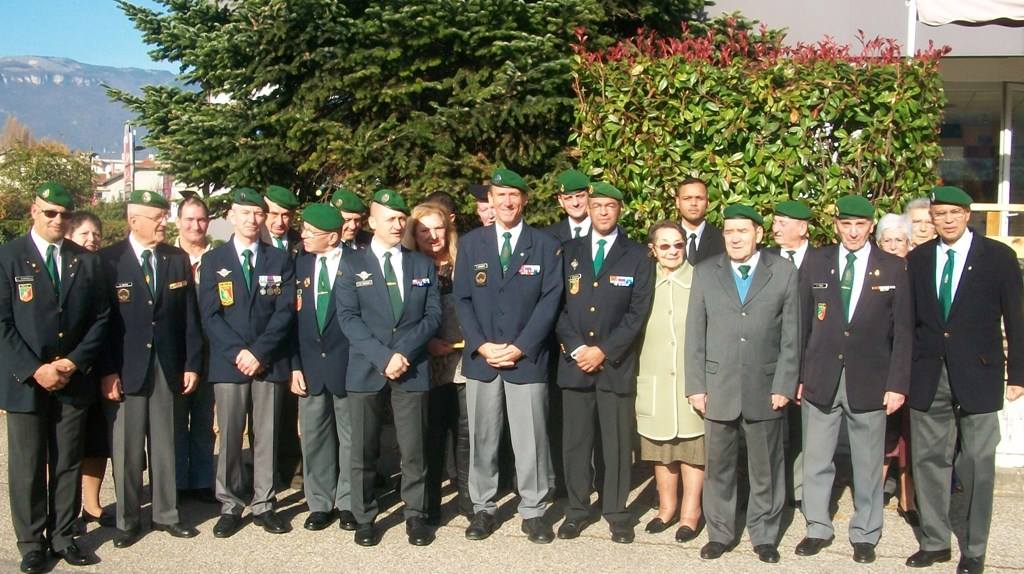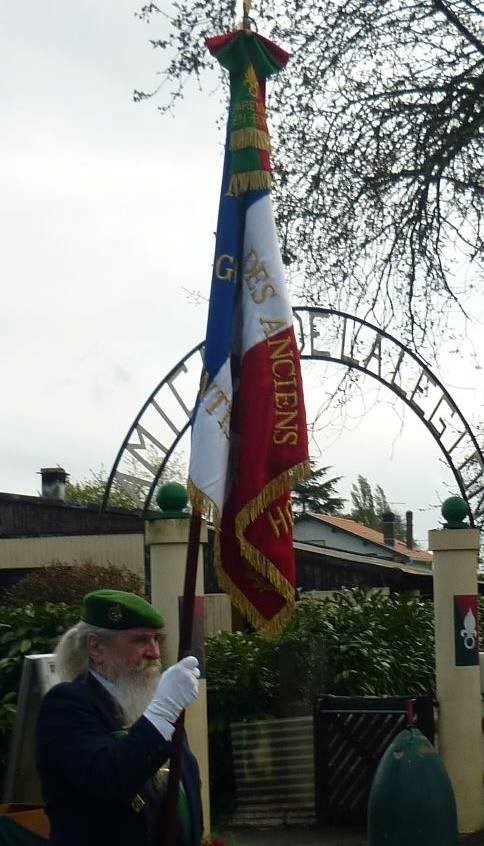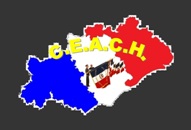https://www.thedrinksbusiness.com/
30th January, 2018 by Rupert Millar
The French Foreign Legion is one of the most famous fighting forces in the world – and one with a strong taste for drink.

Pining for home? Lost love? Or perhaps just the next opportunity for a glass of wine?
Founded in 1831 during France’s colonisation of Algeria, the Legion has become probably the most famous and romantic of all France’s many fine regiments.
Mention the Foreign Legion and the immediate image conjured up in the mind’s eye will be of a soldier in a white kepi, blazing sun and desert sands, holding crumbling outposts against overwhelming odds. Men fighting for reasons they can’t remember. They all joined to forget you see?
A less romantic reading of the Legion’s past reveals the brutish life of soldiering in France’s colonial possessions where disease and melancholy (the dreaded ‘cafard’) laid low Legionnaires by the score and where a Berber bullet or Dahomey Amazon’s cutlass were ever present threats.
Initially founded in 1831 to support France’s colonial conquest of Algeria and to drain the country of various political undesirables, the Legion carved out a reputation for toughness, fighting prowess and no small measure of unruliness on far-flung battlefields the world over.
The pay was poor, leave was rare, and punishment for even minor infractions was harsh.
Desertion and drunkenness were rife. And yet, the Legion has never struggled to fill its ranks, counting on the constant stream of the world’s desperate and dissolute and the promise of escape, adventure, redemption and reform the Legion has always offered – at least in theory if not always in practice.
The Duke of Wellington in one of his famous remarks about the British Army observed: ‘The English soldiers are fellows who have all enlisted for drink – that is the plain and simple fact – they have all enlisted for drink.”
The men who joined the Foreign Legion may not have enlisted for drink per se but drink and the getting of it was certainly the leitmotif of their soldiering lives.
As one wit pithily noted: “The legionnaires drink to forget – but they seldom forget to drink.”
The drinkable life

No white képis: For much of its early existence, although part of the colonial African army, the Legion was uniformed identically to other French metropolitan ‘line’ regiments – referred to as ‘la biffe’ by legionnaires
In many ways they didn’t have to forget, for their drinks, passed over the zinc-topped bars of their canteens, were as diverse as their enemies. There was absinthe and pastis; ‘tafia’, fig liqueur in North Africa, the fierce rice spirit ‘choum-choum’ (or just choum) in Tonkin, ‘aguardiente’ in Mexico, fortified wines laced with quinine[1] and, of course, rough red wine (known as ‘pinard’) the defining drink of the French army.
It’s not for nothing that one ex-legionnaire remembered an old comrade’s exclamation that: “There is only one place in the world where life is drinkable – in the Legion!”
By the First World War the wine ration was up to half a litre a day and there was always the opportunity for a legionnaire to buy more with their pay.
The problem though was that Legion pay, the cost of wine and a legionnaire’s typical thirst seldom aligned.
Around the turn of the century the basic daily pay for a private was five centimes, 10 centimes for a private first class and 20 centimes for a corporal, rising further for sergeants and sergeant-majors.
Pay was distributed twice a month, on the first and fifteenth day, which gave a soldier a fairly decent lump sum and led to their binges being nicknamed ‘la cuite de la quinzaine’[2] – the ‘fortnightly drunk’.
On pay day it was taken as an inevitability that a good number of the men would indulge in a massive binge and fight either each other (in inter and intra-unit engagements or occasionally along national lines) or men from another nearby regiment especially the hated penal units of the Battalions d’Afrique’ (known as the ‘Bats d’Af’ or ‘Joyeux‘), which, on occasion, ended in fatalities and needed to be broken up by a squadron or two of Chasseur d’Afrique.[3]
Things got really out of hand every quarter when the Legionnaires were given their rebate on whatever was left of their 35 franc uniform allowance.
When the dust settled on the almighty bender that usually followed, the guardrooms of Sidi-bel-Abbés or Saïda[4] were filled to bursting and the least appealing, most isolated forts in the bled[5] had found their replacement garrisons.
In any other army this would simply not be tolerated but given the draconian conditions in which they lived and worked it is to be supposed that more than a few Legion officers considered it the best way for the men to let off some steam and the aggression was seen as a positive sign of fighting spirit.
Not that officers were always much better. Although they might have had more financial means and aristocratic backgrounds than their men, many were just as drunken, dissolute and prone to violence.
During the Second Empire in particular, young officers were keen to cultivate an image as a ’buveur de sang’ – a ‘blood drinker’ – swaggering, fearsome and quick to anger. Duels were common and in fact one was more likely to be reprimanded for even the slightest hesitation in accepting a challenge than partaking in duelling; while to refuse was utterly unthinkable.
One officer, Charles Clemmer, remembered they sought satisfaction, “without rhyme or reason”.
He went on: “Anything served as a pretext in the bars and cabarets: a song begun at another table, a glass poured ‘en quarte’, that is to say the hand turned to the right, a gesture, a look, was interpreted as requiring a duel.”

Poacher turned gamekeeper: The ‘Spahis’ were North African tribesmen who fought for the French and acted as local police force in the colonies. In dress, temperament and equipment they were only very slightly removed from those that still fought the French.
Clemmer himself once experienced a slight one evening in a restaurant when another man completely unknown to him walked up, drained Clemmer’s glass of wine and then insulted him to his face. Instantly, Clemmer smashed a bottle over the challenger’s head. They then fought a duel a few days later.
But although a legionnaire might be flush every two weeks, after deducting the money he needed for necessities such as soap, bootlaces, polish and the like, there was precious little left for the comforts of wine and tobacco – even at the heavily subsidised prices wine and tobacco were sold at in the canteen – and next to nothing for even the most unappealing prostitute that might inhabit a garrison town.[6]
One could go out to the local town as long as one could pass muster on the way back in. Joseph Ehrhart remembered the duty sergeant waiting by the barracks gate as the 9pm curfew approached watching the returnees, “stop several metres from the small door, then take aim to try to get through without bumping into something.” Those who didn’t make it spent a night in the cells.
The local bars sold wine at an hourly rate rather than by the glass which made it potentially attractive but a night in a garrison town was a sure fire way of ending up overcharged or robbed if one’s guard was down – more than one comatose legionnaire was brought back, “in the costume of Adam” from time to time.
In the barracks meanwhile a shot of Pernod was 15 centimes, a shot of absinthe 40, which was a still a steep price for a private whereas a litre of Algerian wine cost just five cents and was the automatic choice for almost everyone.
Still, this was a day’s pay for a legionnaire and the amounts they could drink were prodigious – three bottles was not unusual for a ‘quiet’ evening.
Antoine Sylvère, who stole money from the post office where he worked and joined the Legion under the name ‘Flutsch’, recounted in his memoir how his company of 120 men once consumed 700 litres of wine between them in a sitting – close to six litres each; the gold standard for ‘real’ legionnaires be they officers or enlisted men.
Apart from the few who had some private means or the occasional pay packet from their family, the ways to augment one’s pay in order to buy wine resulted in a wide array of scams and wheezes. Legionnaires might sing or even beg in the local town or even become the unit tattoo artist charging a modest fee for their creative, occasionally lewd and very often crude creations – there are tales of legionnaires tattooing ‘F*ck you’ across the palm of their right hand directing the insult at whichever superior they were saluting. One man even had it writ large across his forehead.
Selling medals, uniform parts and equipment was the chief method of earning quick drinking money even though it drove the French military hierarchy to distraction; especially when the Legionnaires of the later mounted companies discovered the sort of bender that could be funded by selling their expensive horse furniture and saddles.
The penalties for doing so were harsh and included docking of pay (usually merely helping to drive the endless spiral of larceny in the inveterate drinker), time in the cells and corporal punishment. But as the historian Donald Porch notes: “When the idea of a collective, or even a solitary, drinking spree was in the air, it deterred no one.”[7]
Legionnaire Flutsch’s company once sold off their underpants in order to fund a communal drunk and for some the practice began before they’d even left France. The American Erwin Rosen remembered waiting at Fort St Jean in Marseille for the next Africa-bound transport ship and one new recruit swapped his boots for four litres of wine.
And if you didn’t sell your own equipment you could always steal and sell somebody else’s.
As failure to have a complete set of kit on inspection day led to punishment the man missing his boots, bandolier or belt simply pilfered them from someone else until one had, as historian Martin Windrow describes, “a constant game of larcenous musical chairs,”[8] that went on until someone, somewhere, maybe even another company, carried the can for it.

A particularly spirited depiction of a Legion square fending off hordes of “savage tribesmen” in Morocco as depicted on the front cover of Le Petit Journal in October 1907. In reality the firepower of modern rifles – especially of such a well-ordered unit – would have kept the enemy at a respectable distance
This sort of stealing and counter-stealing was, said Rosen: “Considered absolutely respectable and gentleman-like,” but the taking of more personal effects was another matter altogether and any who robbed from their messmates could be treated very harshly indeed; there was more than one cover-up for a retaliatory beating that ended in manslaughter although the savage legend later propagated by works such as Beau Geste that thieves were crucified on table tops using bayonets was pure and lurid fantasy.
Drunkenness was a prime cause of trouble however. The estimate of one chaplain was that during the height of France’s imperial ventures from the 1870s to early 1900s, around 75% of courts martial in the Legion had alcohol at their root.
Men got it into their heads to desert or go over to the enemy while drunk (usually returning pretty swiftly after sobering up), they were found drunk on duty, they insulted and even assaulted their superiors while under the influence and in 1908 the cook of the officers’ mess of one regiment was found passed out on the kitchen floor, completely paralytic – at 11.45am.
If the men got unruly in barracks then the chief cure was either a real or contrived call to arms – the pre-dawn scramble to the sound of bugles and the shouting of NCOs and then the chorus of ‘Merde!’ as the distribution of blank ammunition indicated it was just a drill.
Not that real campaigning necessarily stopped drunkenness either. At the Battle of Magenta[9] in 1859, victorious legionnaires in the manner of many soldiers throughout history quickly descended on the town’s wine cellars, broached the barrels and binged on their contents, to the extent that their officers found a few men floating face down drowned in wine the next morning and Lieutenant Charles-Jules Zédé recalled it was sometimes difficult to distinguish between those lying in the street who were dead and those who were dead-drunk.[10]
Or there was the equally injurious practice of looting the regimental booze supply during some catastrophe such as a retreat.
During the disastrous evacuation of Lang Son for example in 1885 (in the course of France’s invasion of Tonkin) a legionnaire known as Bôn-Mat remembered, “barrels of wine and tafia…lay all over the floor” and out of control soldiers of all units contributed to the growing madness by getting drunk on the abandoned liquor. Lieutenant-colonel Herbinger who was later court-martialled for the incident singled out the second battalion of the Legion as being “particularly drunk” although its commander, Major Diguet, refuted the charge saying no more than 20 of his men were inebriated and those in charge of the barrels who had been most negligent in their duty by not destroying them.
Other senior officers (without a shred of evidence) even insinuated Herbinger was drunk when he had made the unnecessary decision to fall back. Although the embarrassing inquest was quickly brought to and end and Herbinger escaped censure, he died the following year, a broken man, aged just 46 and the episode led to the fall of Jules Ferry’s government.
The old sweats
The Legion has fought many enemies during its history: in the 19th century they included Basques in the Spanish Civil War of the 1830s, Russians in the bastions of Sebastopol, Austrians in the cause of Italian unification, Mexicans during the attempt to put an Austrian on the throne as emperor, Prussians in the Loire; Berber tribesmen across North Africa, Chinese pirates in the riverways of northern Vietnam and Dahomean warrior women to name just a few.
But once the war was over the Legion’s chief purpose was as a colonial garrison, especially in North Africa (always considered the Legion’s spiritual home) and later in French Indochina[11] too.
The main active operations the legionnaires embarked upon were gruelling long-range treks through the roasting bled or sweltering Tonkinese bush in pursuit of rebellious tribesmen and it was something they were trained to do. These were conducted at a smart, occasionally brutal pace and the bulk of legionnaire’s training was gradually building up his endurance to be able to conduct them.
Nonetheless, when the expedition set out from its base it tended to be a bit stop start to begin with and one wonders to what extent the first day’s march was an exercise in letting hungover legionnaires sweat out the booze from the previous night’s pre-march cuite.

A half-mounted Legion patrol on the march in Morocco in the 1920s. Credit: Bundesarchiv Bild 102-00721, CC-BY-SA 3.0
Although the Legion is famously associated with the rather dire motto ‘March or Die!’, in the majority of circumstances men who tired or grew sick on the march were not left behind. From time to time however when speed was of the essence or the situation desperate then the sick or wounded might indeed be abandoned.
Knowing that stragglers could expect to be viciously tortured and mutilated by their various enemies putting them out of their misery was considered the kinder option.
Flutsch relayed: ‘When there was one who was on his last legs, we gave him a drink of tafia and then we said: ‘Now it’s your last mouthful.’
‘We would stick the barrel in his mouth and pull the trigger. Then we could go off with a clear conscience.”
Yet another way alcohol was acquired was as a form of crypto-currency. The chief benefactors in this were invariably the older soldiers, the vieux mustaches. New recruits (known as ‘bleus’) were assigned an older ‘daddy’ to show him the ropes and it was a foolish young bleu indeed who didn’t buy his daddy and section corporal a mug or two of wine at the canteen of an evening.
The kit carried by legionnaires could range from 50 to 80lbs in weight and simply fitting it all into one pack was a daunting task but one could always call upon a veteran to help of course – for the distinctly affordable sum of a litre of pinard. It wasn’t just packing either, extra time in the saddle on a mounted patrol, getting out of unwanted fatigue duties or even the cleaning of kit (known colloquially as getting someone to ‘faire ton truc’) could all be passed on to another man for the sum of 5 centimes or a mug of wine.
That said, if the Legion counted murder, thievery, drunkenness and deceitfulness among its many sins, it was reckoned there was at least one vice not present in the Legion – gambling, because no one ever had enough cash to wager in the first place.
At any rate, an overawed naïf finding themselves in the company of an old sweat in any dubious looking bar from Sidi-bel-Abbés to Paris via Saigon would do well to heed the old advice: ‘Don’t drink with him and, above all, don’t lend him money!’
Next: Fact meets fiction in the ‘asylum of misfortune’
[1] The French colonial equivalent of gin & tonic
[2] ‘Cuite’ means ‘cooked’ in French but is also slang for being drunk.
[3] Cavalry raised for colonial service in North Africa, they were recruited from Frenchmen unlike the ‘Spahis’ who were North African.
[4] The main Legion garrison towns in North Africa.
[5] The North African hinterland beyond the pale of French influence.
[6] The famous (or perhaps infamous) authorised brothels, the Bordel Contrôle Militaire (BCM), were not introduced until after the First World War.
[7] Porch, Douglas, The French Foreign Legion: A Complete History of the Legendary Fighting Force, New York: HarperCollins Publishing, 1991, p308
[8] Windrow, Martin: Our Friends Beneath the Sands: The French Foreign Legion in France’s Colonial Conquests 1870-1935, London: W&N, 2010, p140
[9] After which the colour and countless squares, streets and stations in France are named.
[10] Porch, op cit, p130
[11] Today known as Vietnam, Cambodia and Laos with Vietnam usually referred to then as Tonkin (the north), Annam (the centre) and Cochinchina (the south).



































